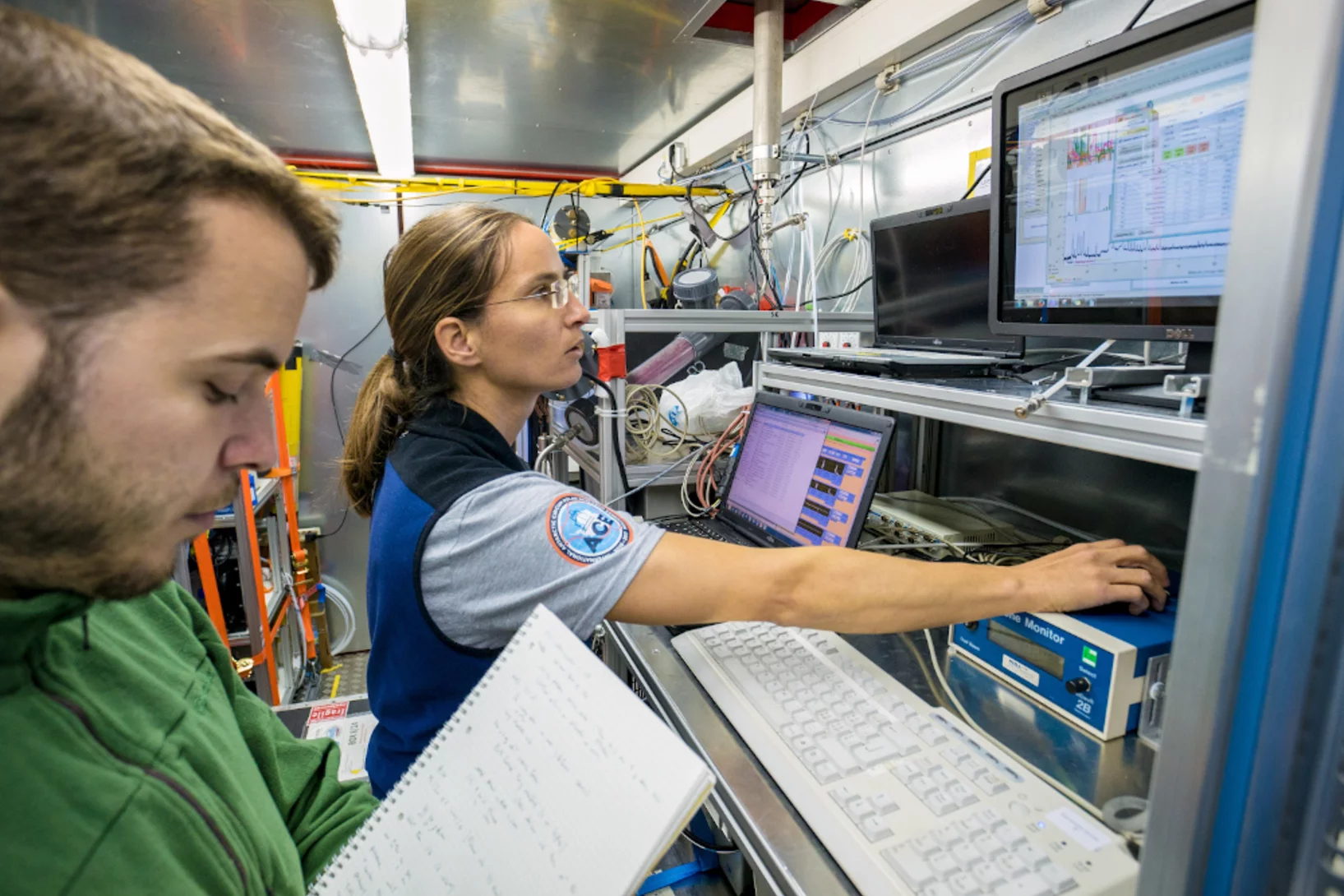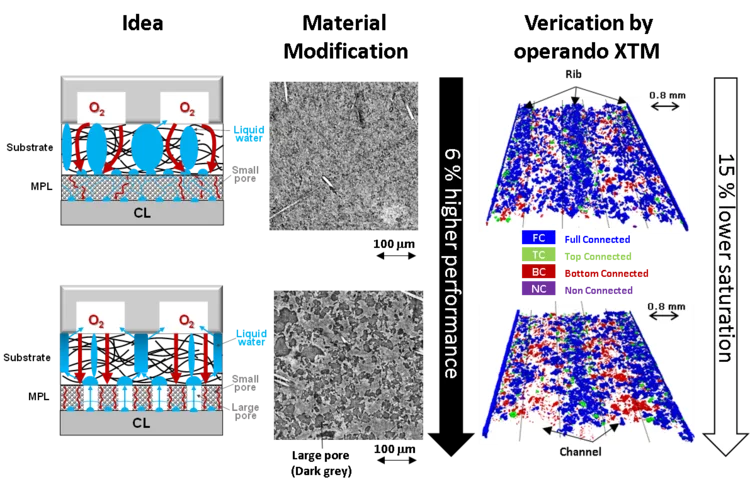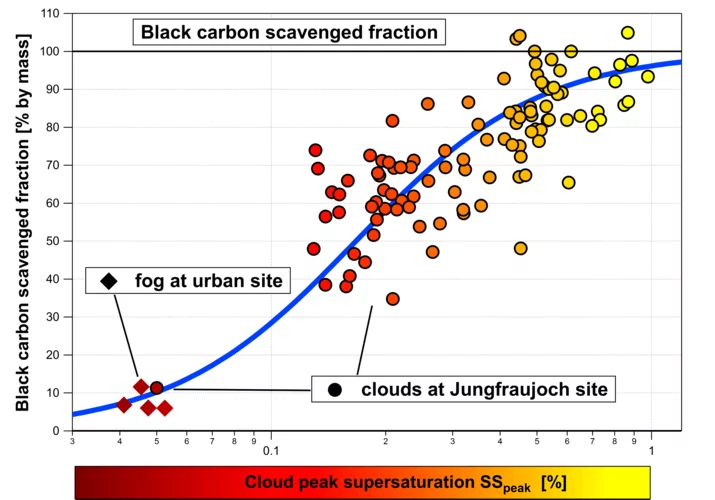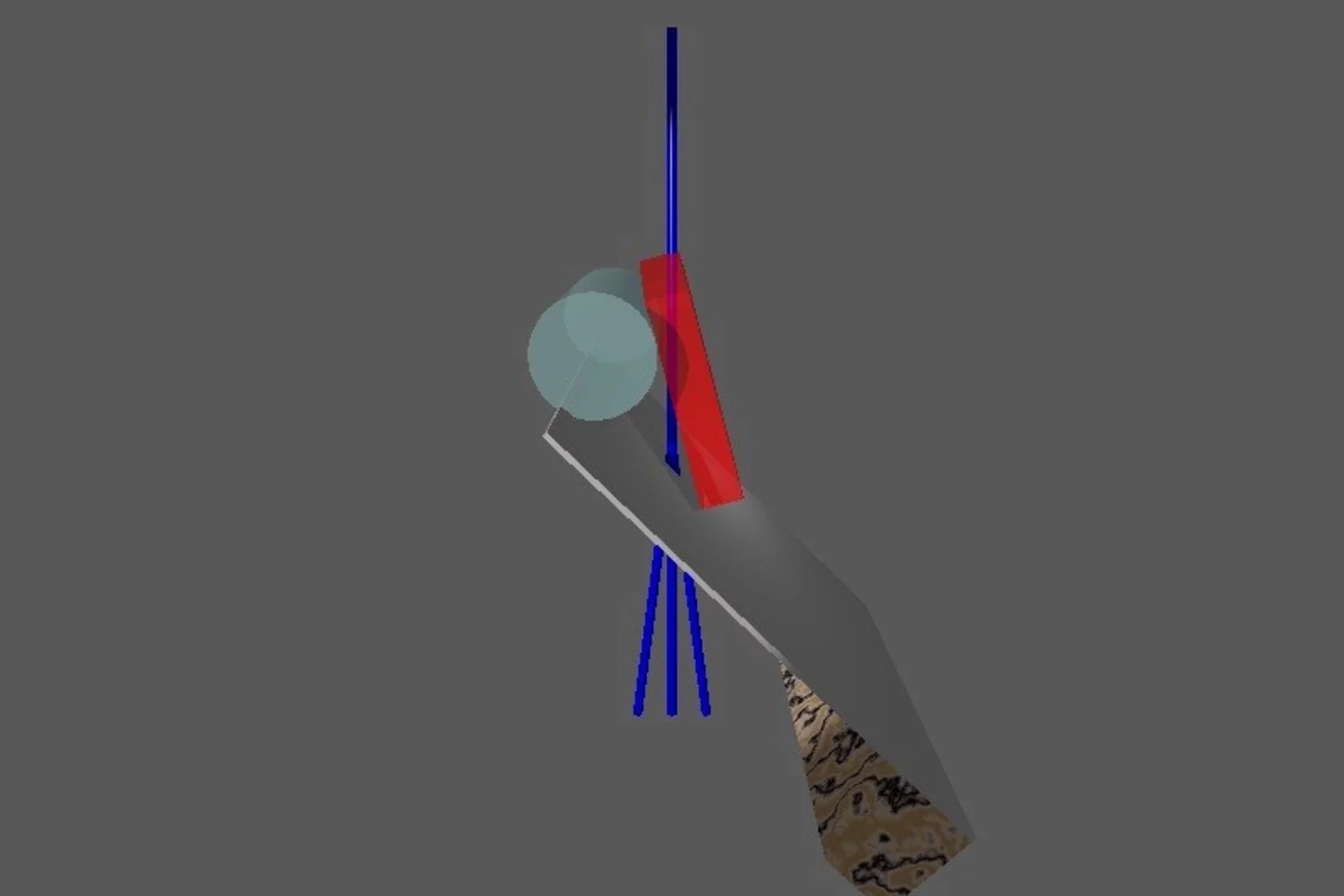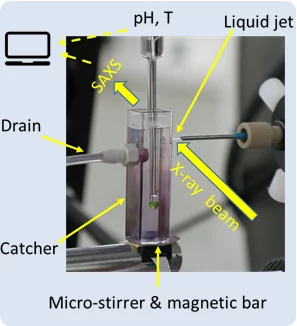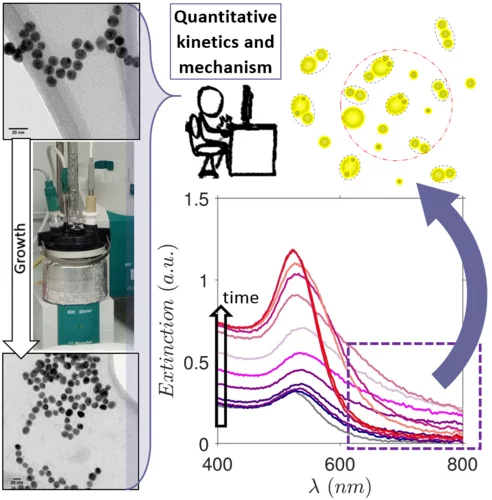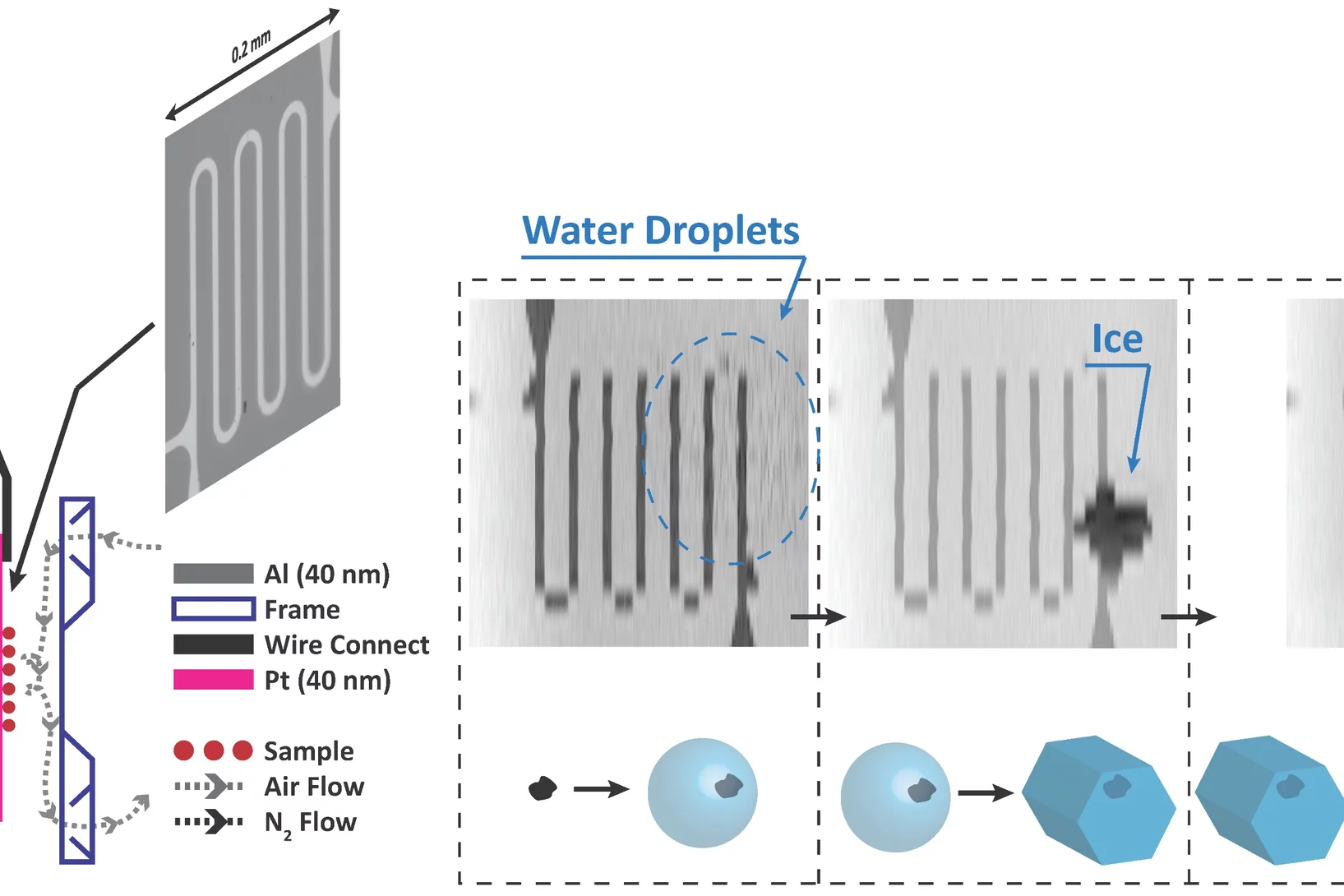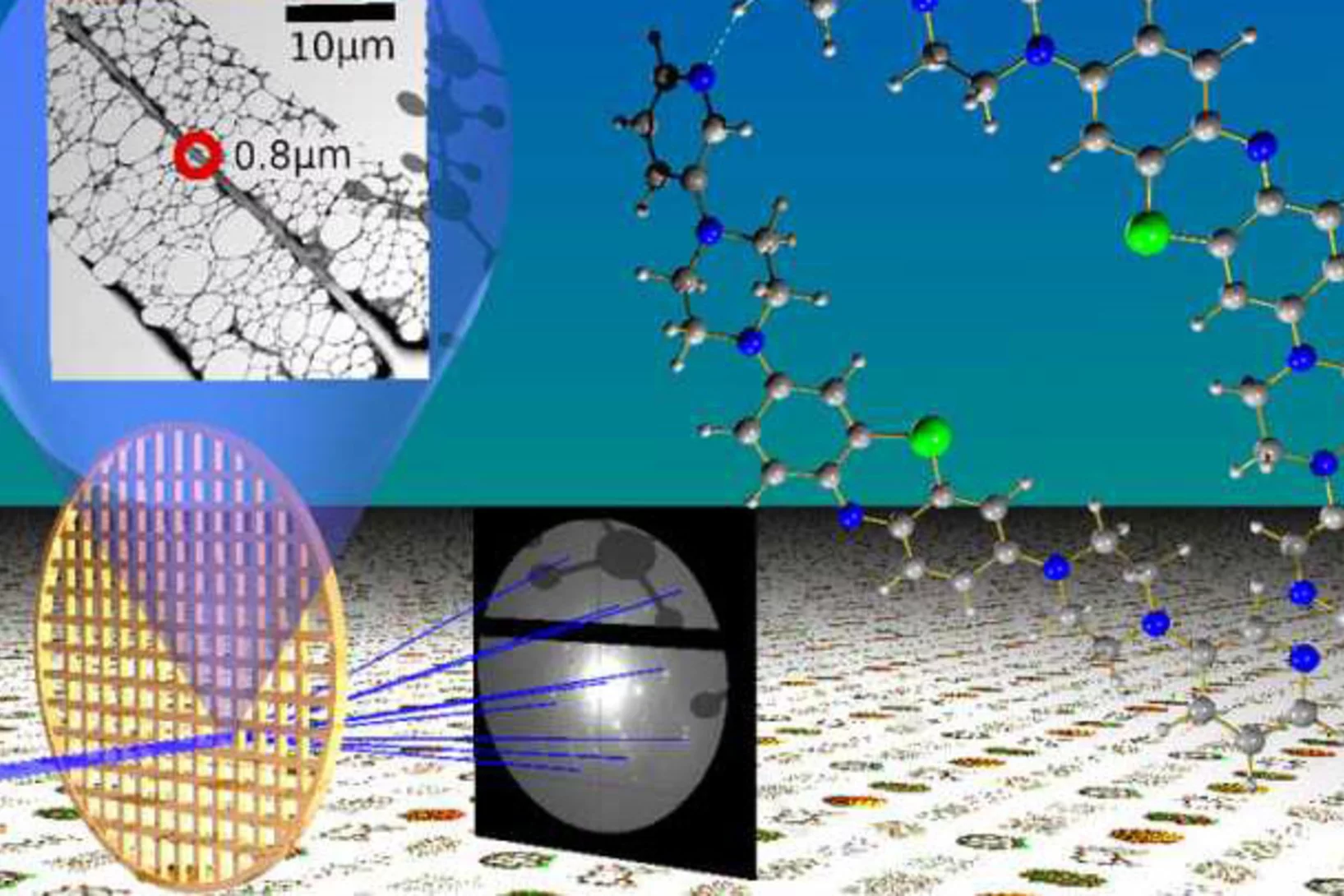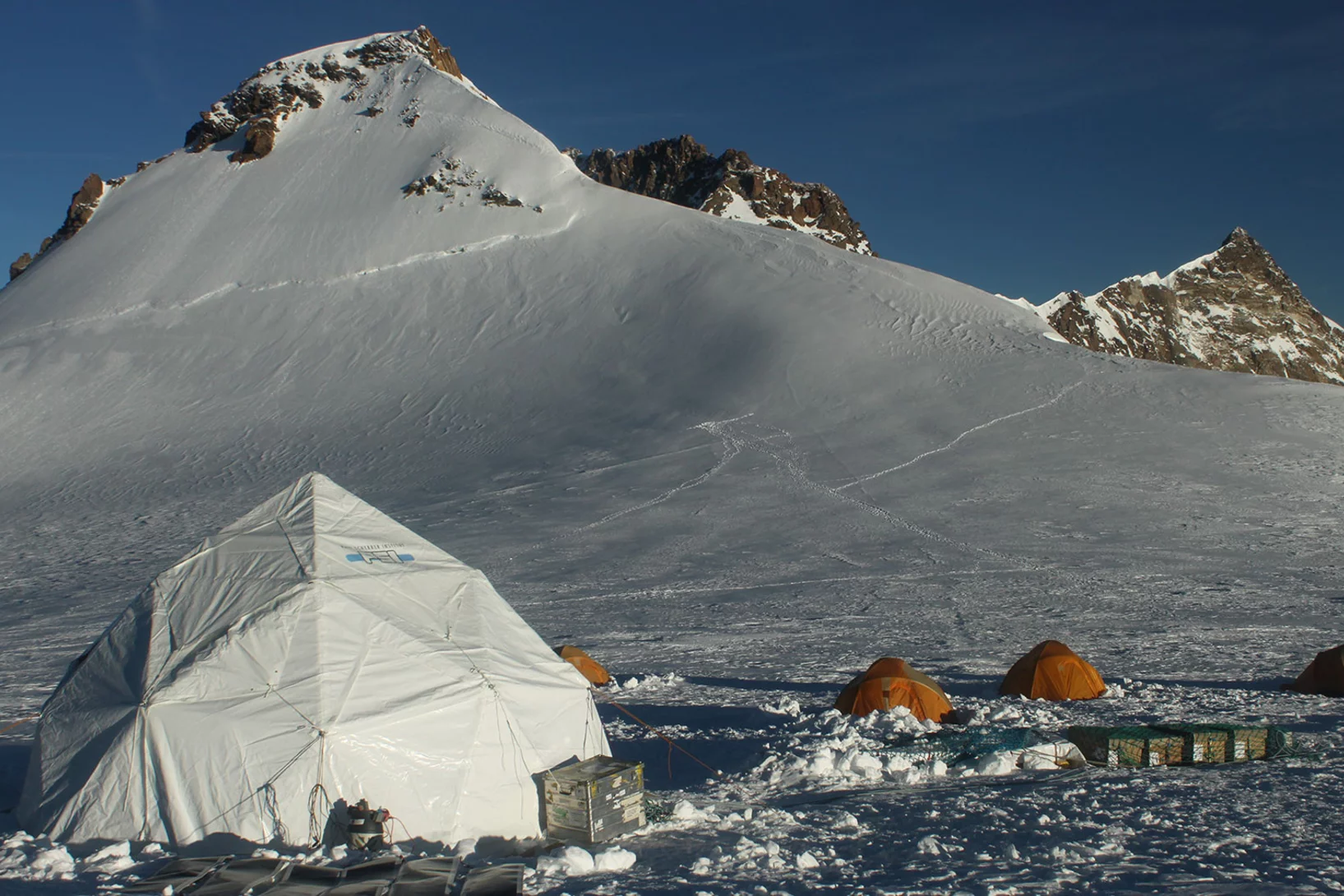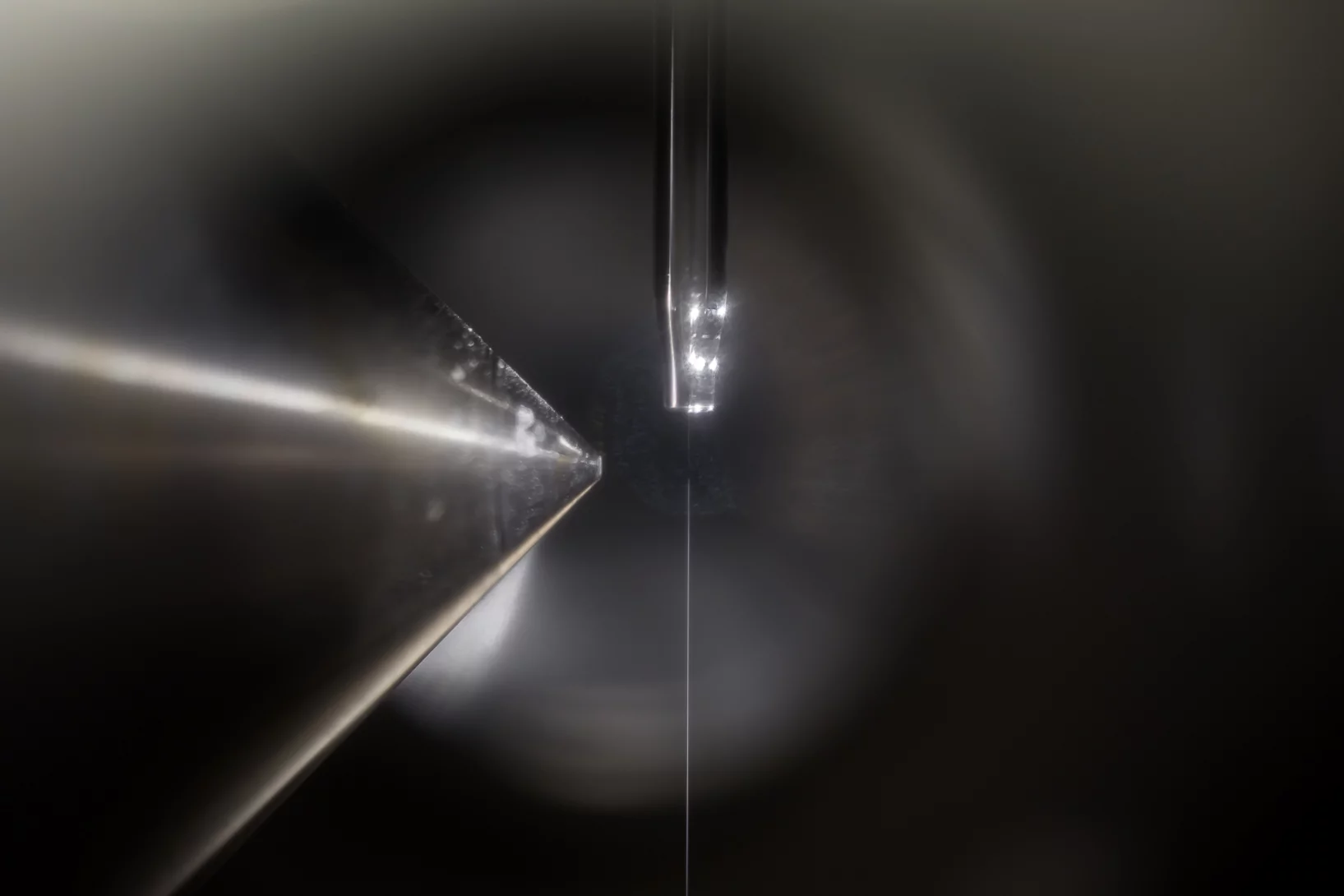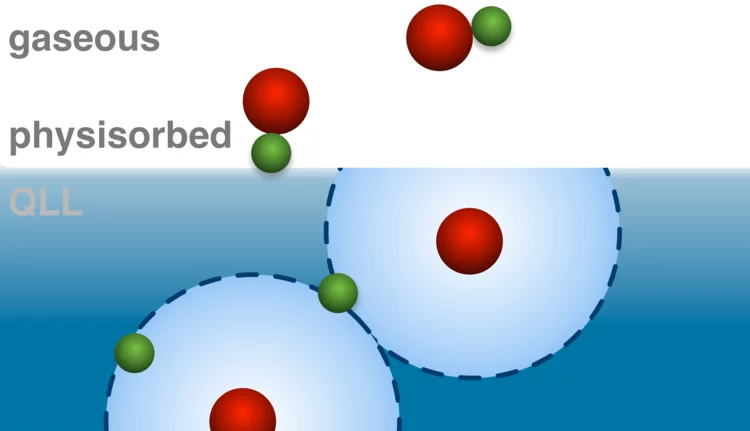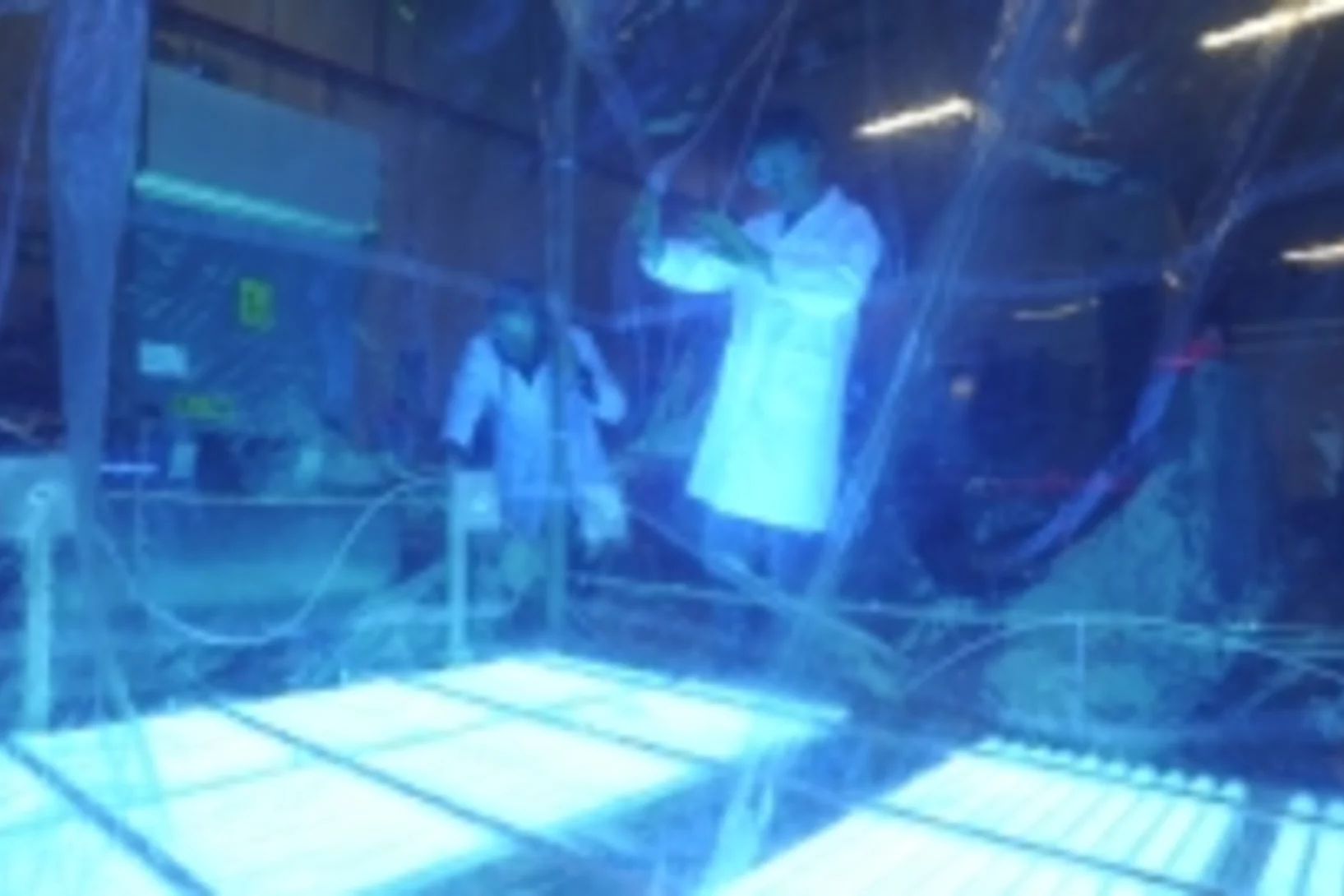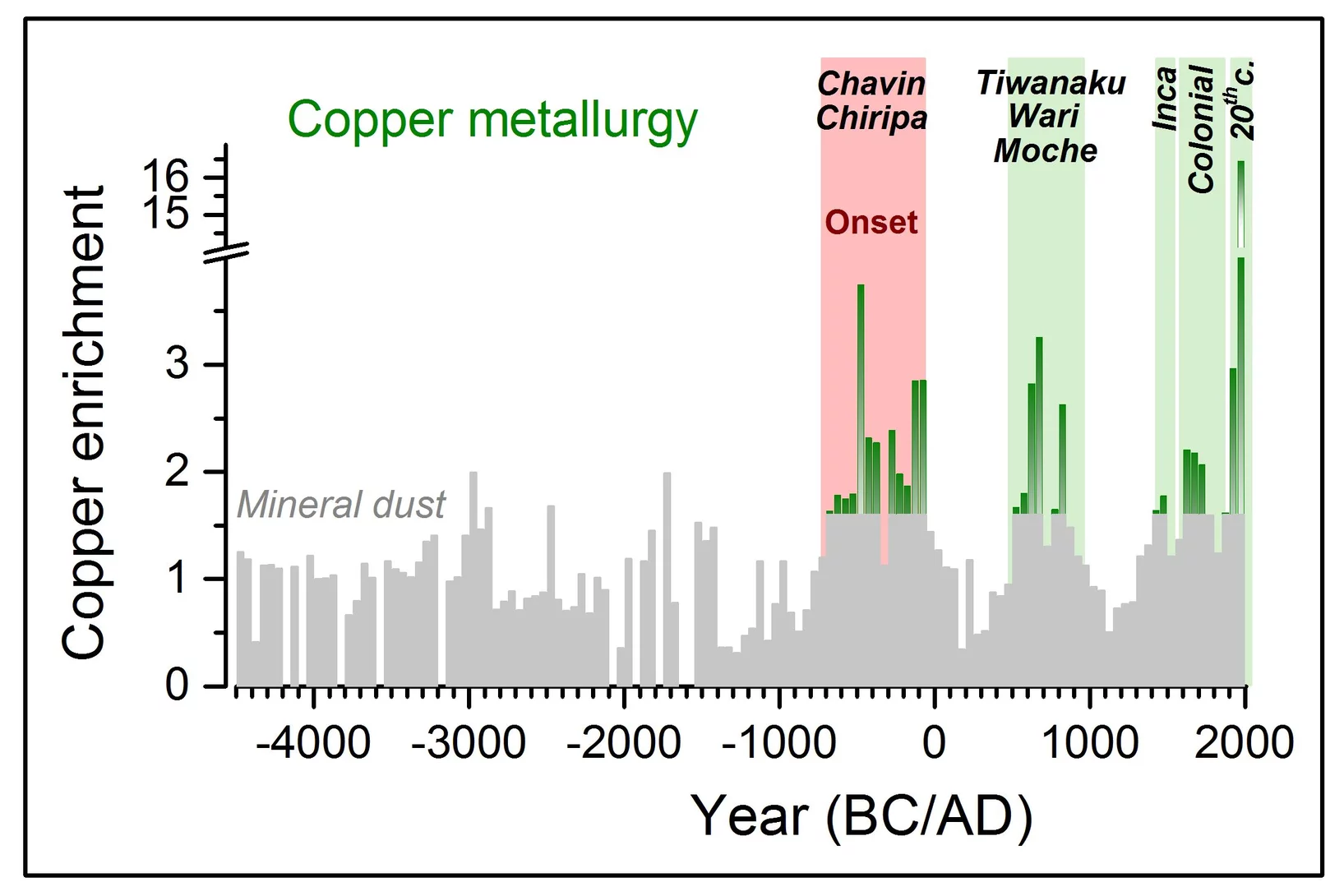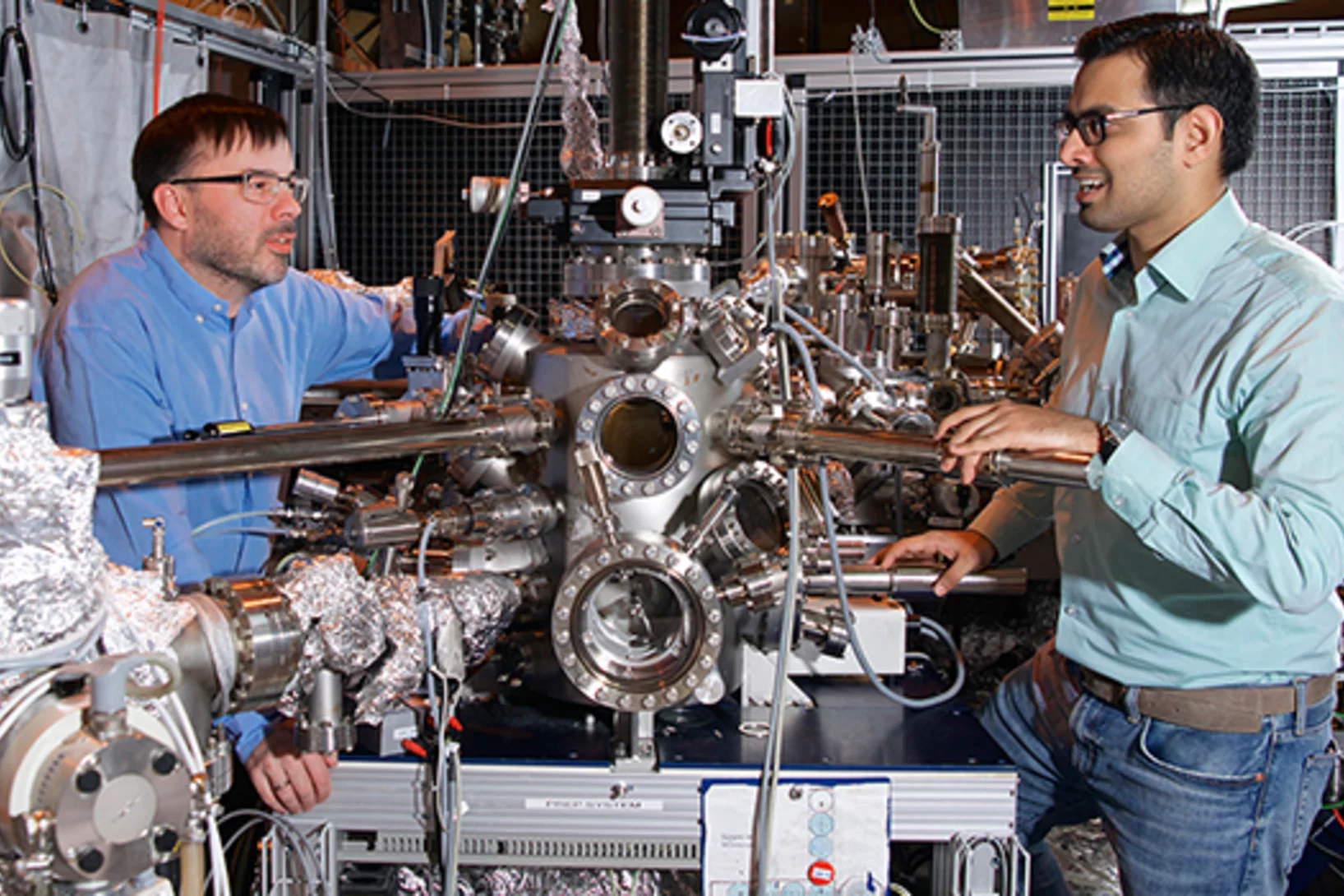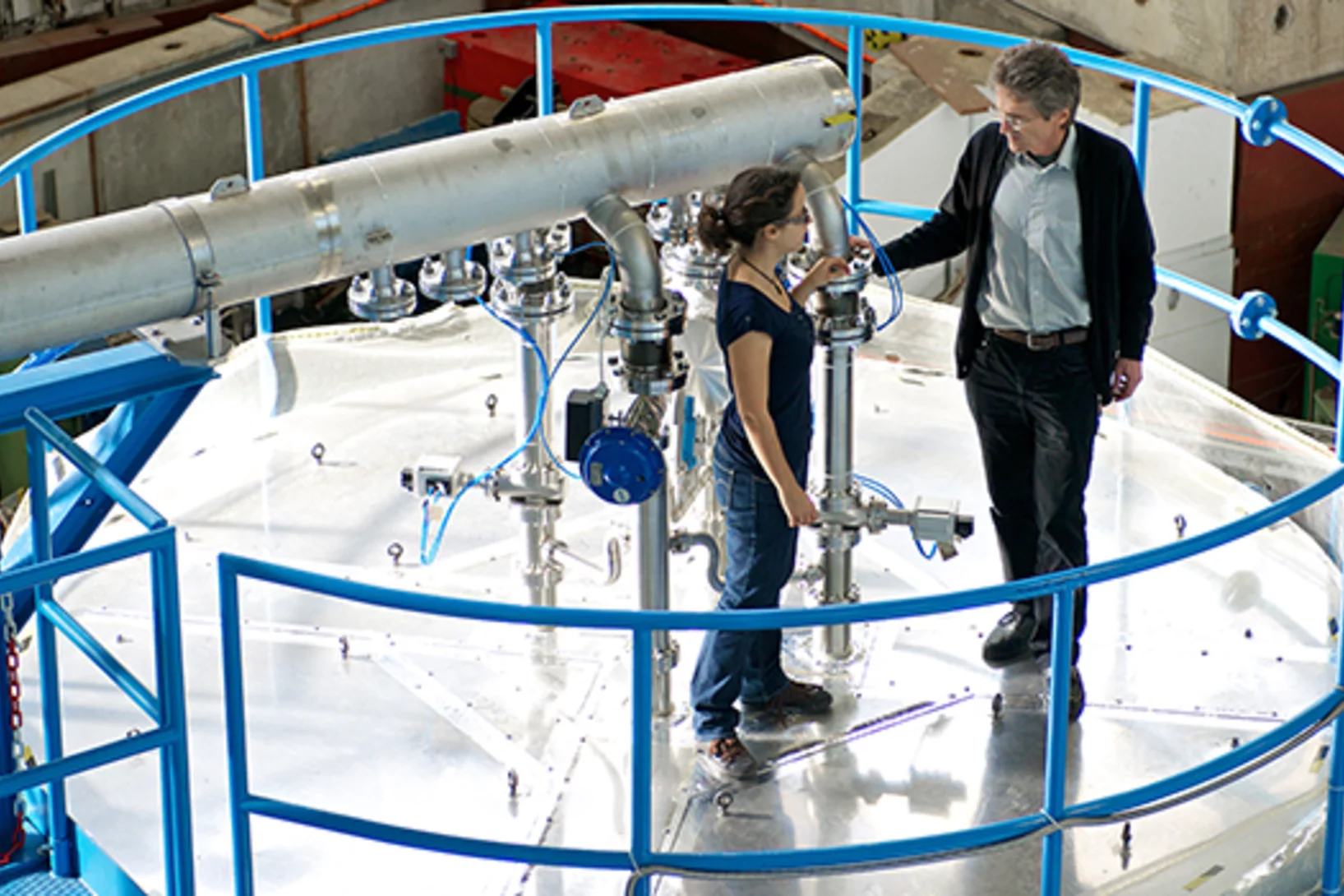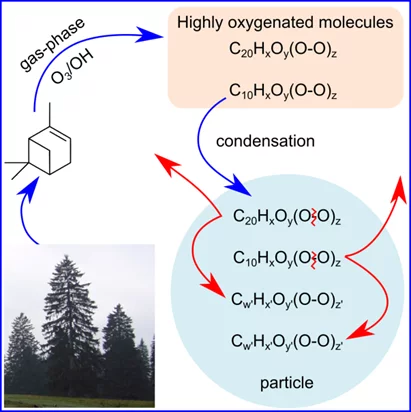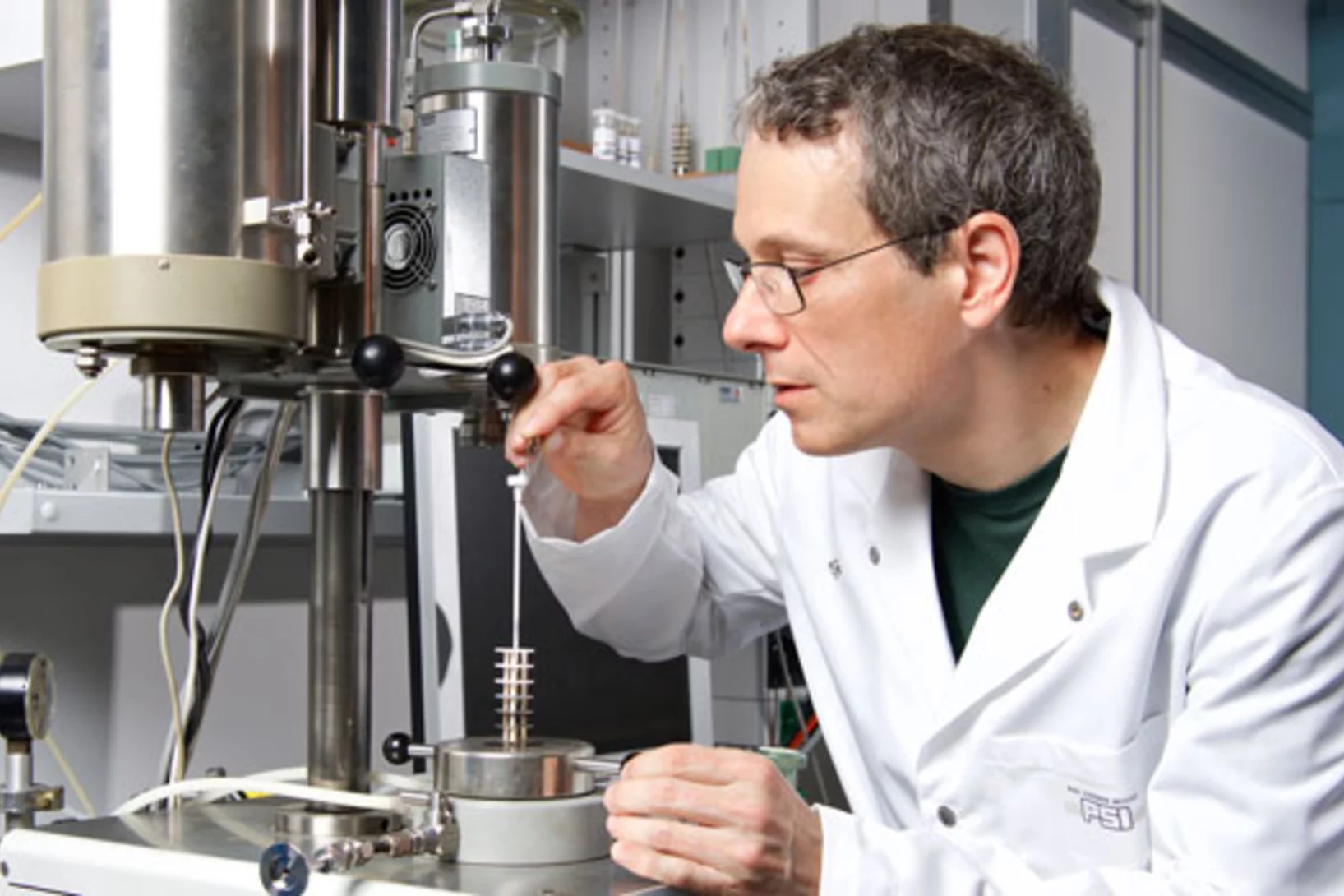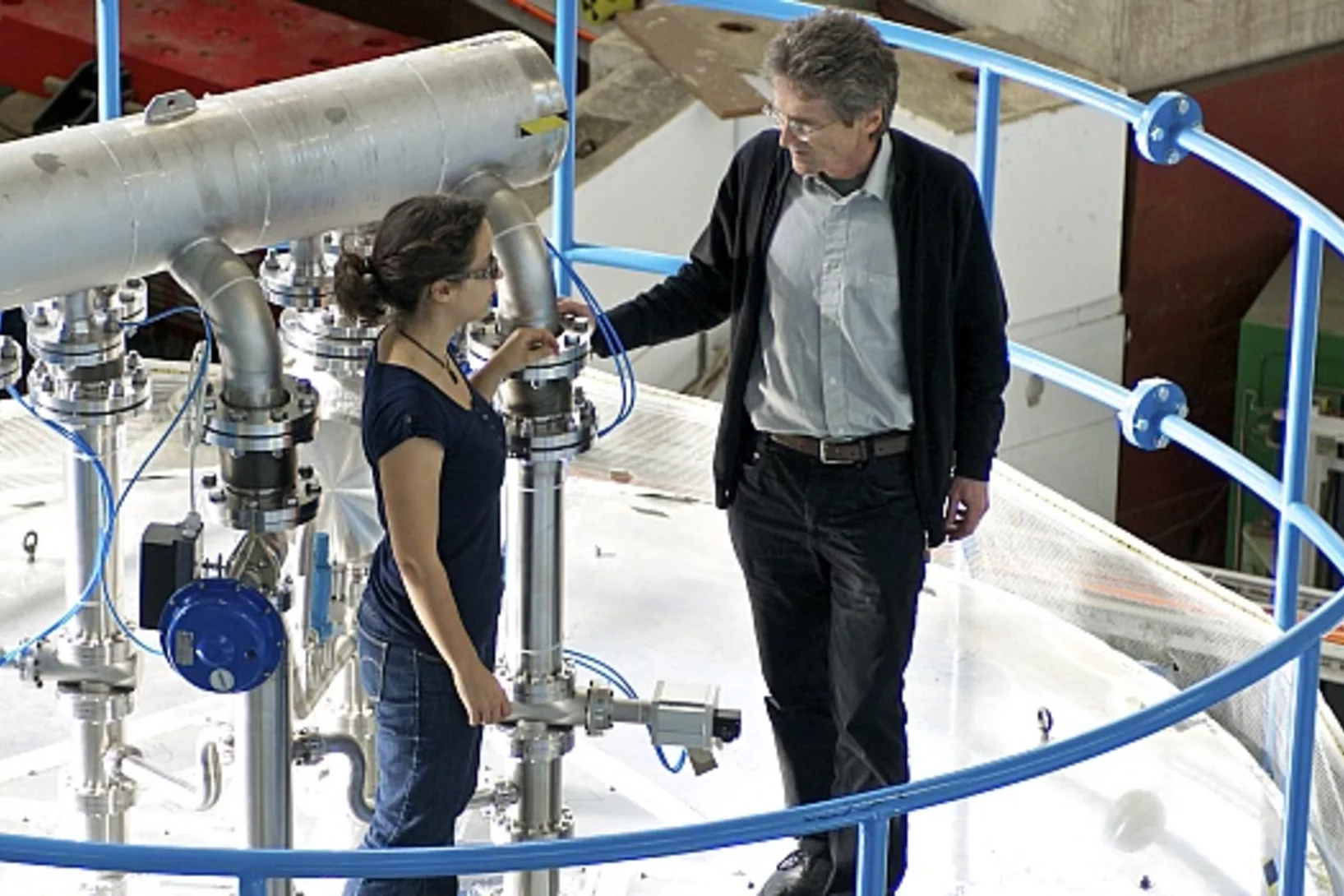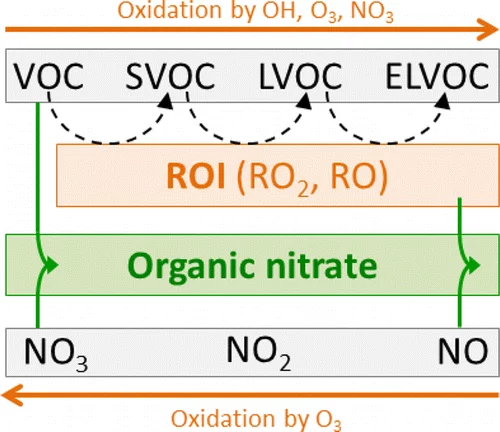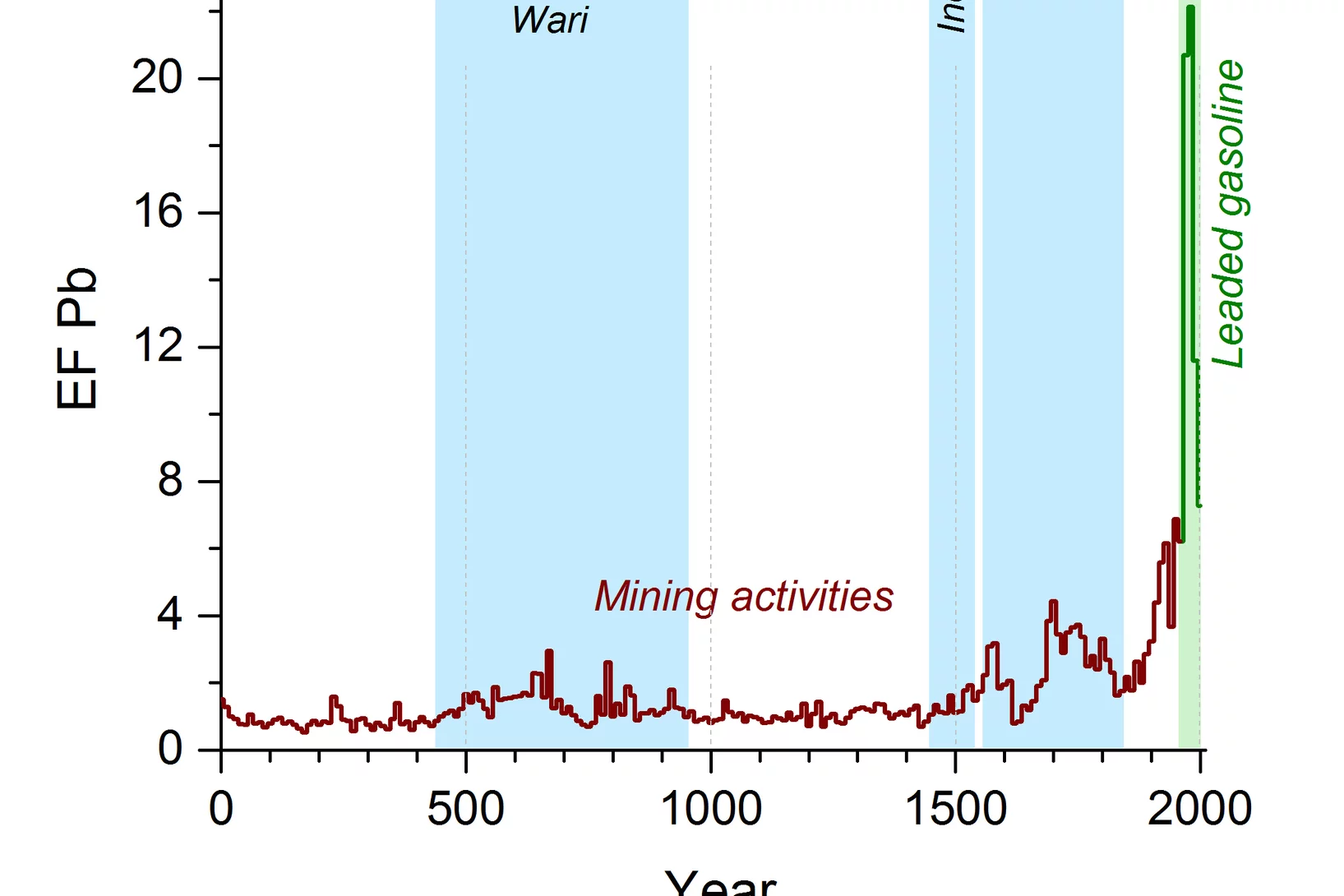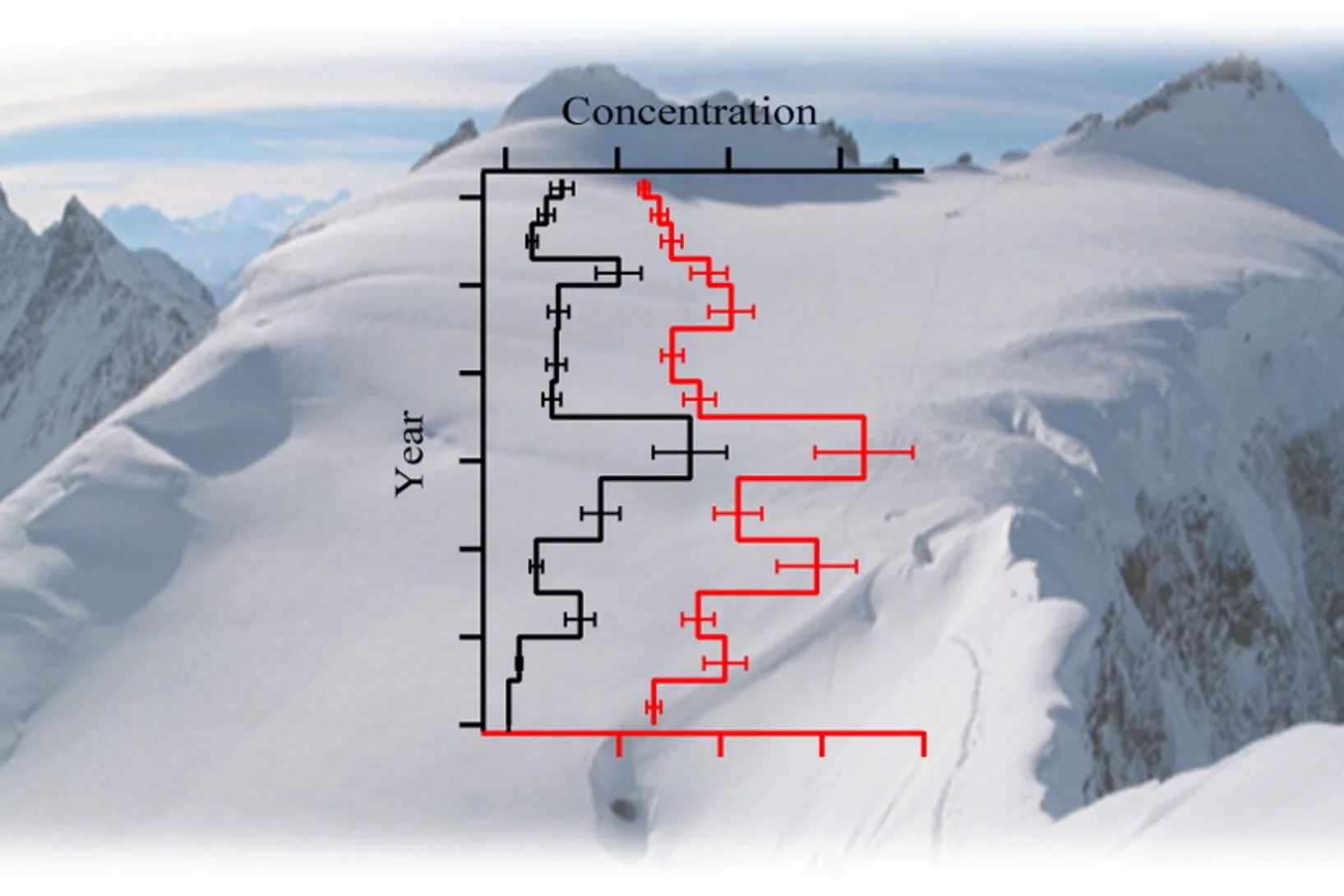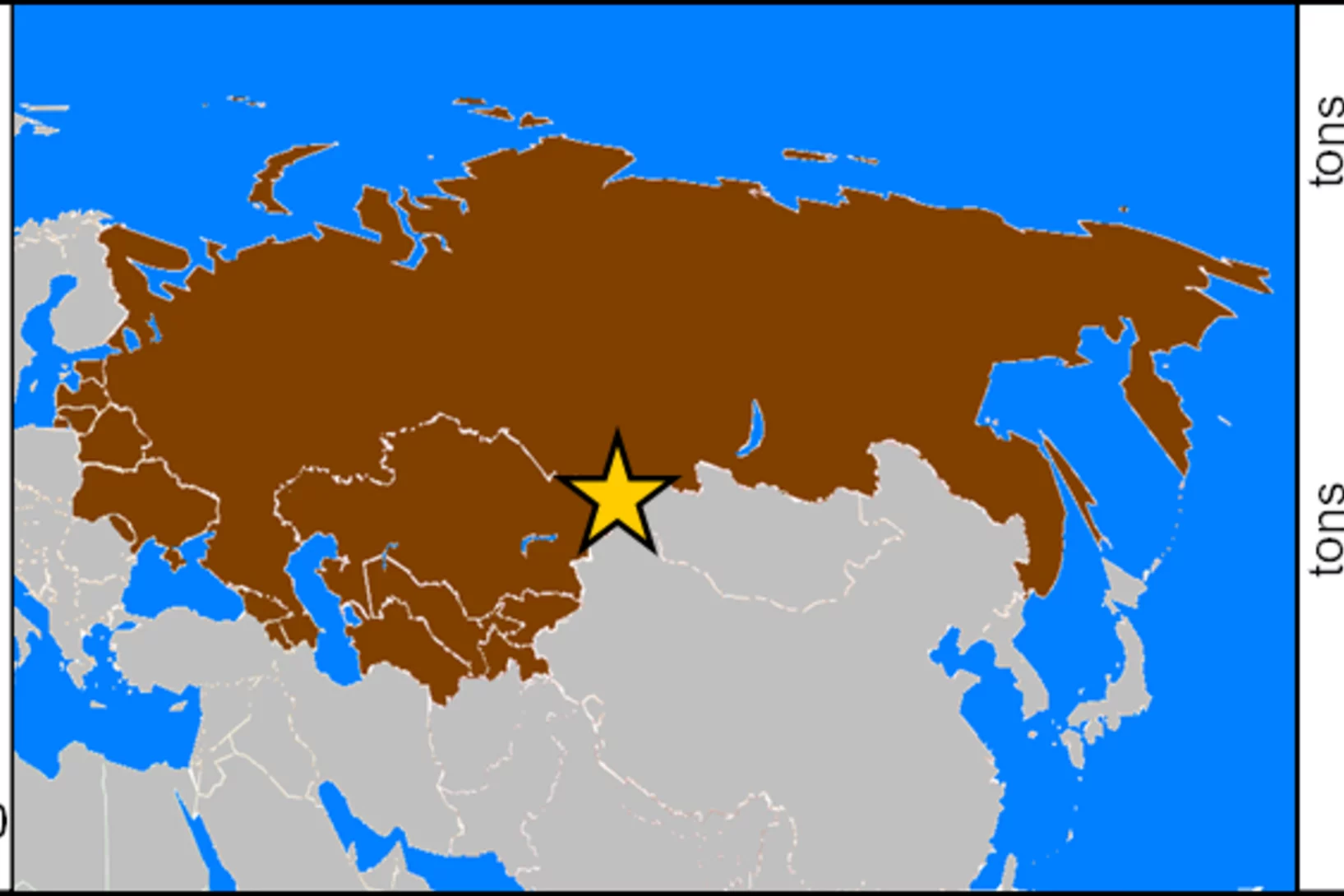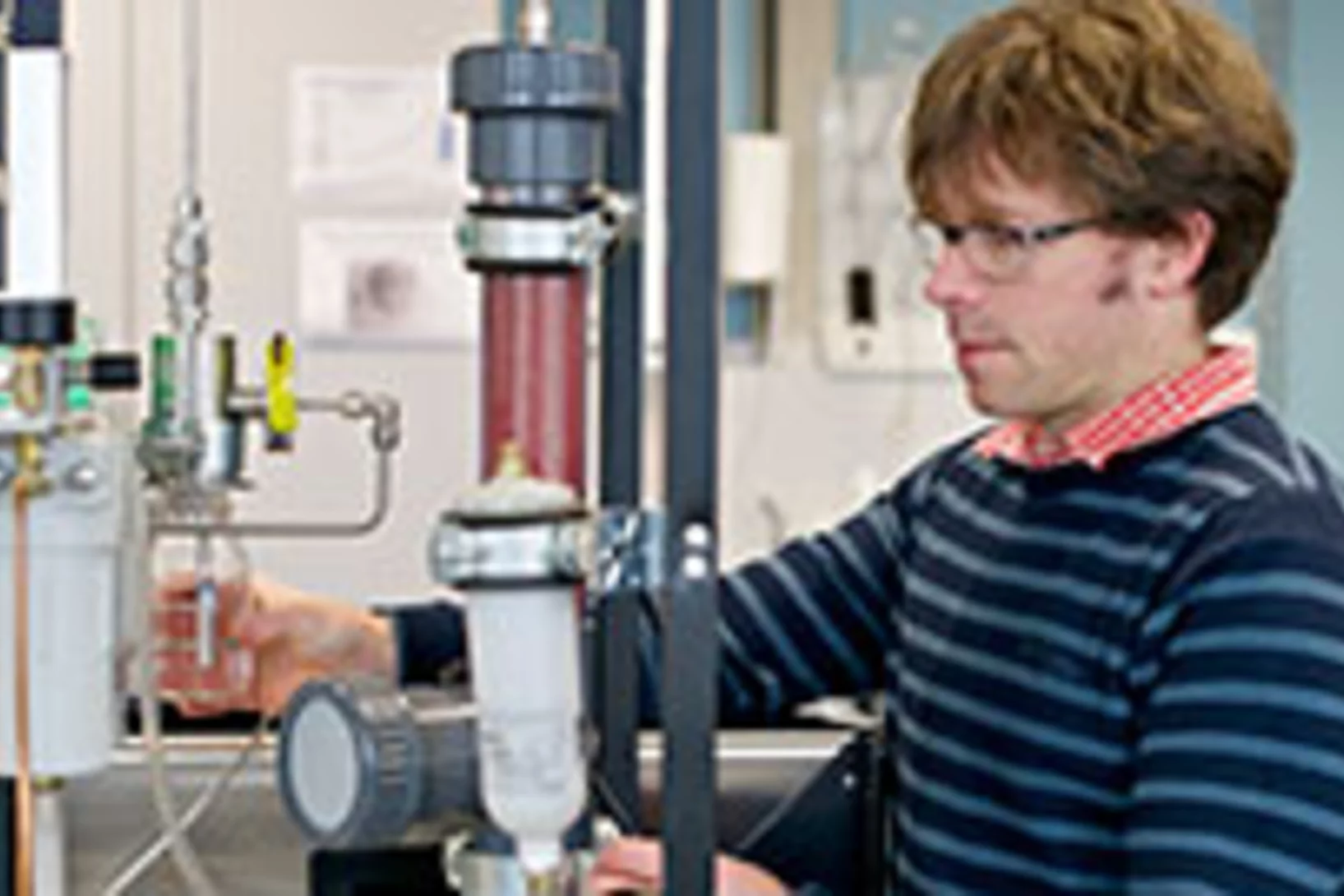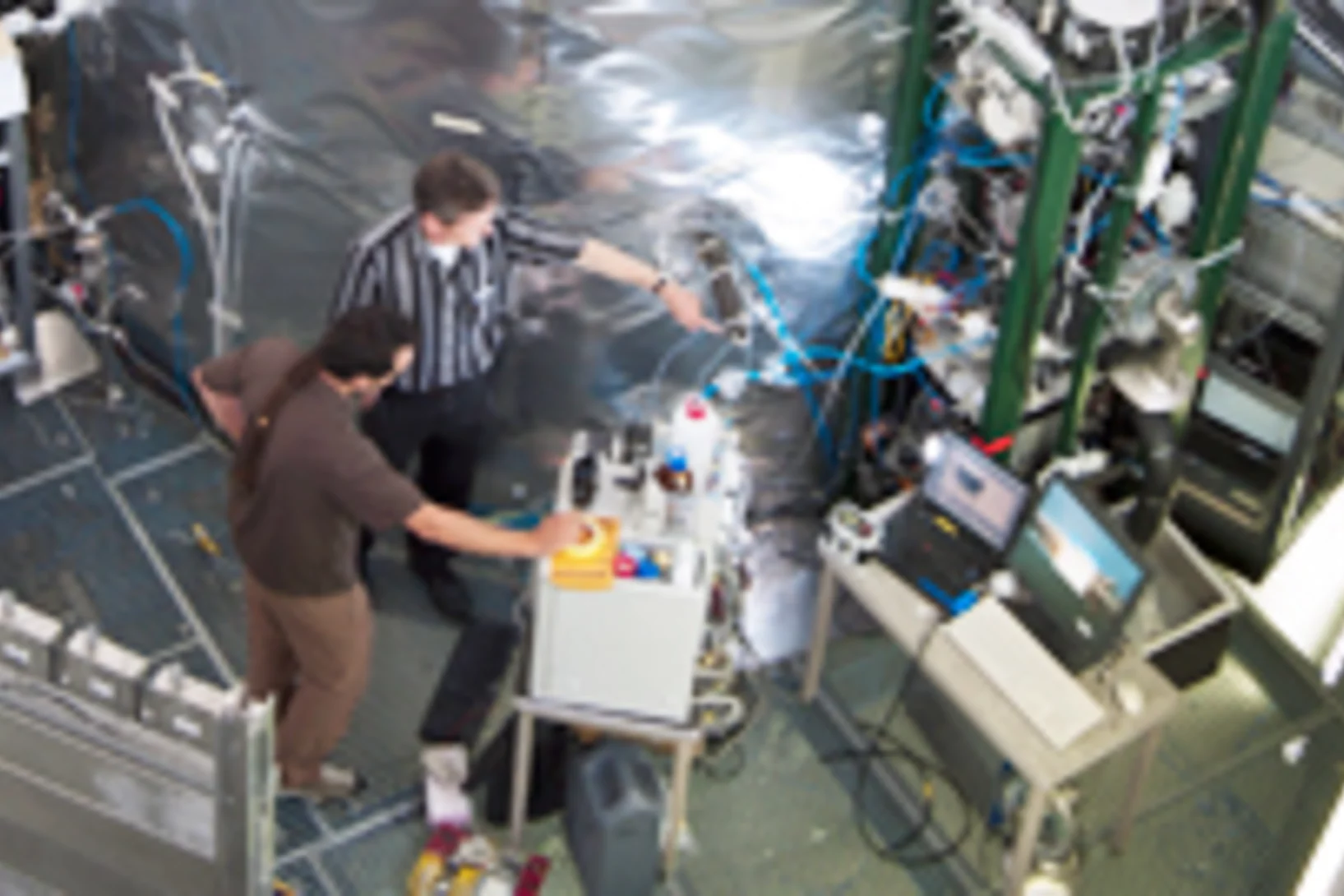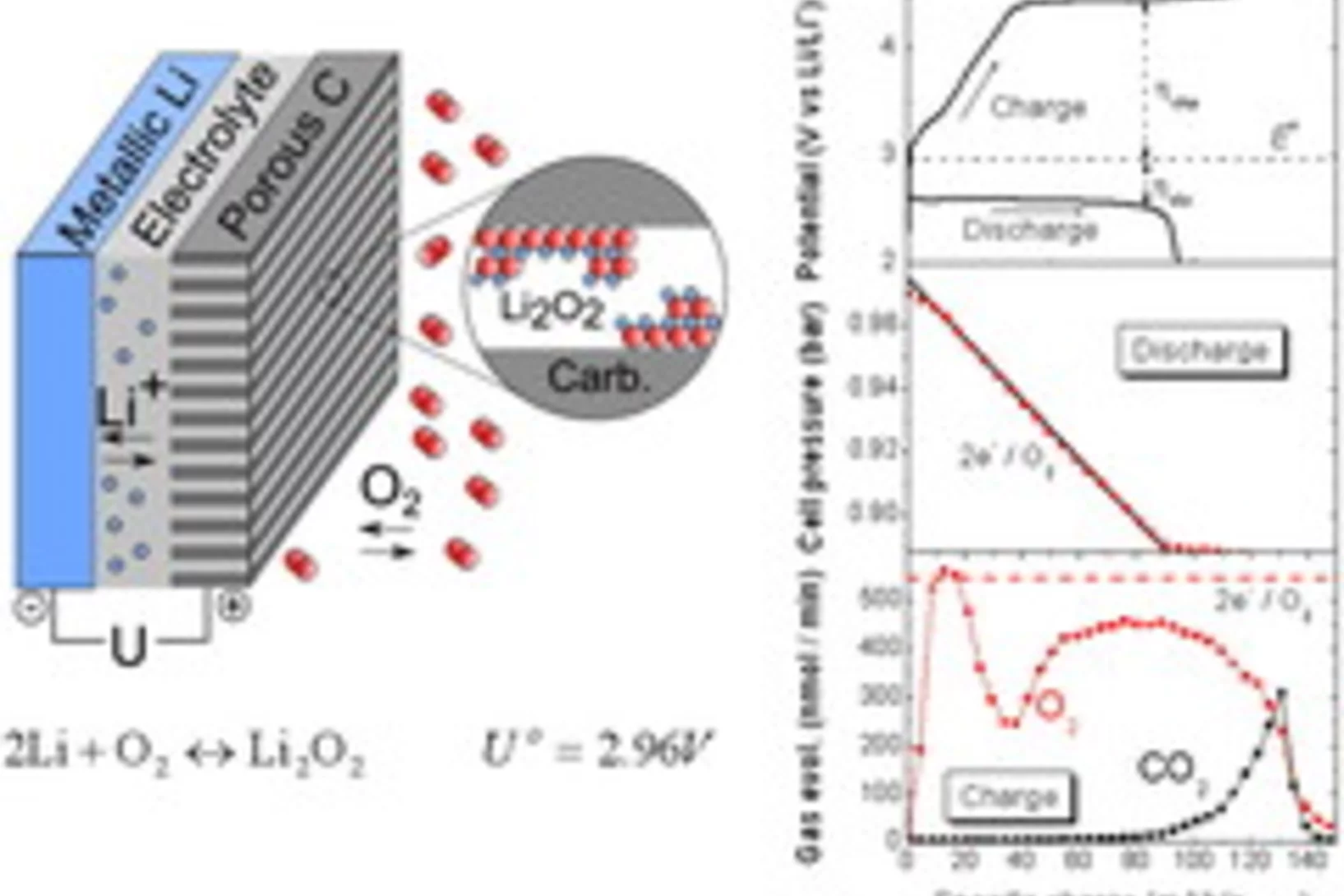Show filters
Newly discovered rapid particle growth rates may be the answer to the mystery of aerosol formation in urban smog
Aerosols, suspended particles or droplets, play a key role in Earth’s atmosphere’s energy balance. They can also result in smog formation in cities, which leads to low visibility and serious health risks for the population. A recent study published in Nature outlines a newly discovered mechanism that may play a key role in the continued survival of particles in wintertime smog.
Around Antarctica in 90 days to study the pristine atmosphere
PSI researchers have designed and equipped a laboratory container for operation on research ships to undertake comprehensive studies of the chemistry and microphysics of the atmosphere. The floating laboratory was first deployed during the Antarctic Circumnavigation Expedition (ACE) with the aim of characterizing aerosol processes that are relevant for climate change in an atmosphere, which is hardly influenced by human emissions of air pollutants other than greenhouse gases.
Fast operando X-ray tomographic microscopy improves polymer electrolyte fuel cells
Polymer electrolyte fuel cells (PEFC) are a key technology for the decarbonization of automotive mobility. In collaboration with Toyota, it is shown by dynamic, operando X-ray tomographic microscopy, how the liquid water saturation in modified gas diffusion layer materials is reduced.
The imaging data supports the understanding of the underlying mechanisms and explains improved cell performance. Novel instrumentation at the TOMCAT beamline further improves imaging time resolution and allows for scan times as short as 0.1 s.
Cloud droplet formation on soot particles
PSI researchers went to the Jungfraujoch research station and applied in situ measurement techniques in real clouds to investigate the ability of soot particles to form cloud droplets. This is a key process determining the atmospheric life-cycle of soot particles, which are primarily emitted by combustion engines and which have a warming effect on climate by absorbing solar radiation.
A third dimension for the nanoscale
Researchers of the Laboratory for Catalysis and Sustainable Chemistry (LSK) from PSI have designed uneven probe supports, which reveal the hidden site of nanocrystals.
Their simple approach allows transmission electron microscopes (TEMs) complete access to the atomic structure of nanomaterials without the need for cumbersome experimental effort.
Giulia Stefenelli wins Swiss Aerosol Award 2019
Award conferred by SwissLung.org during the award ceremony in Berne, Switzerland
Matter before solid nucleation under synchrotron light
Investigation on early stage of solid formation from solution, before nucleation, have been carried out at PSI by small angle scattering technique using X-ray light from the Swiss Light Source SLS. The system under analysis was calcium carbonate, a model system archetype of several sparsely soluble inorganic materials and relevant in many field such as CO2 capturing and biomineralization. The experimental setup, the method, and developed theoretical framework can be applied to many other systems and made available for the entire scientific community.
Kinetics and Mechanism of Metal Nanoparticle Growth via Optical Extinction Spectroscopy and Computational Modeling: The Curious Case of Colloidal Gold
An overarching computational framework unifying several optical theories to describe the temporal volution of gold nanoparticles (GNPs) during a seeded growth process is presented. To achieve this, we sed the inexpensive and widely available optical extinction spectroscopy, to obtain quantitative kinetic data. In situ spectra collected over a wide set of experimental conditions were regressed using the hysical model, calculating light extinction by ensembles of GNPs during the growth process. This model rovides temporal information on the size, shape, and concentration of the particles, and any electromagnetic interactions between them. Consequently, we were able to describe the mechanism of GNP growth and divide the process into distinct genesis periods. We provide explanations for several longstanding mysteries, e.g., the phenomena responsible for the purple-greyish hue during the early stages of GNP growth, the complex interactions between nucleation, growth and aggregation events, and a clear distinction between agglomeration and electromagnetic interactions. The presented theoretical formalism has been developed in a generic fashion so that it can readily be adapted to other nanoparticulate formation scenarios such as the genesis of various metal nanoparticles.
Chemically mapping ice forming particles
Scientists have just nucleated ice in an X-ray microscope for the first time and they created chemical maps of those responsible.
2018 Highly Cited Researchers
Three LAC researchers were highly cited in 2018.
Breakthrough - electron crystallography for everyone
Recent advances in electron crystallography published in Angewandte Chemie and highlighted by Science, Chemical & Engineering News and ScienceNews!Under the lead of LSK member, "Rapid structure determination of microcrystalline molecular compounds using electron diffraction", published in Angewandte Chemie International Edition https://onlinelibrary.wiley.com/doi/abs/10.1002/anie.201811318 has attracted great attention in the chemistry community.
Why the Little Ice Age ended in the middle of the 19th century
In the first half of the 19th century, a series of large volcanic eruptions in the tropics led to a temporary global cooling of Earth's climate. That Alpine glaciers grew and subsequently receded again during the final phase of the so-called Little Ice Age was due to a natural process. This has now been proven by PSI researchers on the basis of ice cores.
Brennstoffzellen zum Durchbruch verhelfen
Wasserstoff gilt als vielversprechende Alternative für eine Zukunft ohne fossile Energieträger. Um Brennstoffzellen weiterzuentwickeln und für einen Markteintritt vorzubereiten, verstärkt die Empa die Zusammenarbeit mit der H2 Energy Holding AG und dem Paul Scherrer Institut (PSI).
Light from the particle accelerator helps to understand ozone decomposition
PSI researchers have developed an experimental chamber in which they can recreate atmospheric processes and probe them with unprecedented precision, using X-ray light from the Swiss Light Source SLS. In the initial experiments, they have studied the production of bromine, which plays an essential role in the decomposition of ozone in the lower layers of the atmosphere. In the future, the new experiment chamber will also be available for use by researchers from other scientific fields.
Coexistence of Physisorbed and Solvated HCl at Warm Ice Surfaces
The interfacial ionization of strong acids is an essential factor of multiphase and heterogeneous chemistry in environmental science, cryospheric science, catalysis research and material science. Using Near Ambient Pressure X-ray Photoelectron (NAPP) spectroscopy, we directly detected a low surface coverage of adsorbed HCl at 253 K in both molecular and dissociated states and interpret the results as physisorbed molecular HCl at the outermost ice surface and dissociation occurring upon solvation deeper in the interfacial region. This study gives clear evidence for nonuniformity across the air−ice interface and questions the use of acid−base concepts in interfacial processes.
Gasoline cars produce more carbonaceous particulate matter than modern filter-equipped diesel cars
In contrast to nitrogen oxides, modern gasoline cars emit much more cancerogenic primary soot (black carbon + primary organic aerosol) and lead to more toxic secondary organic aerosol than modern diesel vehicles.
Ice-core evidence of earliest extensive copper metallurgy in the Andes 2700 years ago
Although copper (Cu) was essential for the wealth of pre- and post-colonial societies in the Andes, the onset of extensive Cu metallurgy in South America is still debated. Based on a 6500 year ice-core Cu record from Illimani glacier in Bolivia we provide the first complete history of large-scale Cu smelting activities in South America. Earliest anthropogenic Cu pollution was found during the Early Horizon period ~700-50 BC. We attribute the onset of intensified Cu smelting in South America to the activities of the central Andean Chiripa and Chavin cultures ~2700 years ago. This study provides for the first time substantial evidence for extensive Cu metallurgy already during these early cultures.
Nanotechnology enables new insights into chemical reactions
Eighty percent of all products of the chemical industry are manufactured with catalytic processes. Catalysis is also indispensable in energy conversion and treatment of exhaust gases. Industry is always testing new substances and arrangements that could lead to new and better catalytic processes. Researchers of the Paul Scherrer Institute PSI in Villigen and ETH Zurich have now developed a method for improving the precision of such experiments, which may speed up the search for optimal solutions.
The substances that brighten up the clouds
Clouds consist of tiny droplets. These droplets form when water condenses around so-called aerosols – small particles in the atmosphere. To understand how in turn aerosols come into existence scientists have now created a comprehensive computer model simulation based on profound experimental data. This simulation revealed that in addition to sulphuric acid, two other substances are crucially involved in the formation of aerosols: organic compounds and ammonia. These results have now been published in the renowned journal Science.
Labile peroxides in secondary organic aerosol
Aerosols, suspended fine liquid or solid particles in the air we breathe, play a central role in many environmental processes through their influence on climate, the hydrological cycle, and their adverse effects on human health. While the mechanisms by which aerosol particles affect our health remain uncertain, the atmospheric oxidation of organic vapors has been shown to be related to the formation of oxygenated organic matter with high oxidative potential, the so-called reactive oxygen species (ROS).
Sun-Petrol
Despite its great potential, solar energy still faces one big problem: the sun doesn’t always shine and its energy is hard to store. Now, researchers at the Paul Scherrer Institute PSI and the ETH Zurich have unveiled a chemical process that uses the sun’s thermal energy to convert carbon dioxide and water directly into high-energy fuels: a procedure developed on the basis of a ground-breaking material combination of cerium oxide and rhodium.
Present-day measurements yield insights into clouds of the past
Researchers have shown how fine particles are formed from natural substances in the atmosphere. These findings will improve our knowledge about clouds in the pre-industrial era and thus will contribute to a more accurate understanding of both the past and future evolution of our climate.
Organic Nitrate Contribution to New Particle Formation and Growth in Secondary Organic Aerosols from α-Pinene Ozonolysis
The chemical kinetics of organic nitrate production during new particle formation and growth of secondary organic aerosols (SOA) were investigated using the short-lived radioactive tracer 13N in flow-reactor studies of α-pinene oxidation with ozone. Direct and quantitative measurements of the nitrogen content indicate that organic nitrates accounted for ∼40% of SOA mass during initial particle formation, decreasing to ∼15% upon particle growth to the accumulation-mode size range (>100 nm). Experiments with OH scavengers and kinetic model results suggest that organic peroxy radicals formed by α-pinene reacting with secondary OH from ozonolysis are key intermediates in the organic nitrate formation process
Pb pollution from leaded gasoline in South America in the context of a 2000-year metallurgical history
Exploitation of the extensive polymetallic deposits of the Andean Altiplano in South America since precolonial times has caused substantial emissions of neurotoxic lead (Pb) into the atmosphere; however, its historical significance compared to recent Pb pollution from leaded gasoline is not yet resolved. We present a comprehensive Pb emission history for the last two millennia for South America, based on a continuous, high-resolution, ice core record from Illimani glacier. Illimani is the highest mountain of the eastern Bolivian Andes and is located at the northeastern margin of the Andean Altiplano.
Polychlorinated biphenyls in glaciers
We present a highly time-resolved historical record of polychlorinated biphenyls (PCBs) from an Alpine ice core (Fiescherhorn glacier, Switzerland). Introduced in the 1940s, PCBs were widely used industrial chemicals. Because of their persistence they are still found in the environment, long after their production phase-out. The Fiescherhorn ice core record covers the entire time period of industrial use of PCBs, that is, 1940?2002. The total concentration of six PCBs varies from 0.5 to 5 ng/L and reveals a temporal trend, with an 8-fold increase from the early 1940s to the peak value in the 1970s.
Ice-core based assessment of historical anthropogenic heavy metal (Cd, Cu, Sb, Zn) emissions in the Soviet Union
The development of strategies and policies aiming at the reduction of environmental exposure to air pollution requires the assessment of historical emissions. Although anthropogenic emissions from the extended territory of the Soviet Union (SU) considerably influenced concentrations of heavy metals in the Northern Hemisphere, Pb is the only metal with long-term historical emission estimates for this region available, whereas for selected other metals only single values exist.
Experiments in the clouds – how soot influences the climate
PSI-researcher Martin Gysel receives prestigious European funding (ERC Consolidator Grant) for his studies on the role of soot in cloud formation and global warming.
Particle formation in the atmosphere – further aspect unveiled via the CLOUD experiment at CERN
Clouds consist of cloud droplets that are formed from tiny particles floating in the atmosphere. How these particles develop, however, largely remains a mystery. The formation of particles from amines and sulphuric acid has now been described for the first time à a milestone in atmospheric research.
Dosing Differential Electrochemical Mass Spectrometry (D-DEMS) for Li-O2 Batteries
The high-energy rechargeable Li-O2 battery has been subject to intensive research worldwide during the past years. The Li-O2 cell mainly comprises a negative (e.g. Li metal) and positive (e.g. porous carbon) electrode separated by an electronically insulating, but Li+ conducting electrolyte layer. In order to study the cell chemistry, a differential electrochemical mass spectrometry setup based on a set of valves, a pressure sensor and a quadrupole mass spectrometer has been developed.
Effect of surface charge density on the affinity of oxide nanoparticles for the vapor–water interface
Using in-situ X-ray photoelectron spectroscopy at the vapor-water interface, the affinity of nanometer-sized silica colloids to adsorb at the interface is shown to depend on colloid surface charge density. In aqueous suspensions at pH 10 corrected Debye-Hückel theory for surface complexation calculations predict that smaller silica colloids have increased negative surface charge density that originates from enhanced screening of deprotonated silanol groups by counterions in the condensed ion layer.



